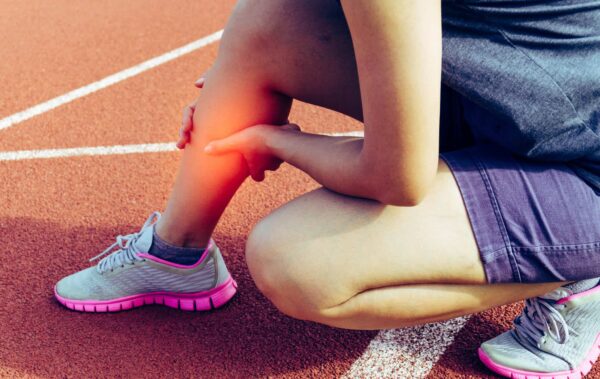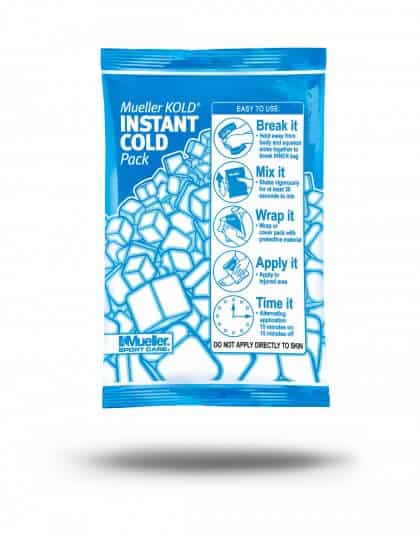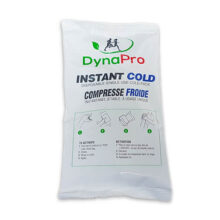Calf Power Sleeve
Login For Dealer Pricing
The LP Support Calf Power Sleeve features a Y shaped Power Band, a Regulation Area and seamless Lycra for unmatched performance and comfort.

Tennis leg is an injury caused by a partial tear of the gastrocnemius muscle at the back of the lower leg. This sports related muscle injury can be caused by running, jumping or pushing off on one leg. These are all activities commonly required in tennis and also in other sports like basketball and soccer.
This calf injury usually presents together with injuries to other muscles and soft tissues at the back of the lower leg. It is a sub type of the general category of injuries called calf strains.
Typical symptoms of tennis leg are an audible popping sound in the calf area and persistent pain and soreness there. There may also be pain associated with the act of trying to flex the ankle.
Tennis leg is typically treatable using the P.R.I.C.E. (Protection, Rest, Ice, Compression, Elevation) conservative protocol. Calf sleeves can help to apply compression to the calf muscles and promote healing. Surgery is required only in cases involving compartment syndrome.
The calf consists of two muscles – the gastrocnemius (which has 2 heads) and the soleus. The gastrocnemius is the larger of the two muscles and is a superficial muscle that lies closer to the skin. The soleus, on the other hand, is smaller and deeper under the skin.
Both muscles connect to the Achilles tendon at the bottom of the lower leg.
The gastrocnemius is an example of a biarthrodial muscle that crosses two joints – the knee and the ankle. This means that it can be subject to higher forces than other muscles that cross only one joint. As a result, it is particularly vulnerable to calf strain injuries like tennis leg as well as other soft tissue injuries.
Tennis leg tends to result from a sudden contraction of the calf muscles. Typically, this happens when someone is sprinting or changing direction. It can also occur when “pushing off” the ground such as to execute a tennis serve, for example.
These movements are very common among tennis players, which is how the injury acquired its name. Many recreational tennis players tend to neglect proper warm ups and, if middle aged, may not be as physically fit as more serious players. As a result, tennis leg injuries are frequently seen among these individuals.
The gastrocnemius muscle plays a key role in “pushing off” to jump, sprint or change direction.
As a result, most cases of tennis leg involve injury to the gastrocnemius and specifically to its medial or inner head (the one closer to the centre of the body). A minority of cases may alternatively involve injury to the soleus muscle.
Tennis leg can also happen to athletes in many other sports such as basketball, soccer and rugby. These are all sports that require frequent “pushing off” to jump, sprint or make a sudden change of direction. The resulting demands on the gastrocnemius will tend to cause this injury.
Athletes (or other individuals) who suffer a tennis leg injury will likely experience some or all of the following:
Individuals experiencing some or all of these symptoms should see a healthcare professional for medical advice. They should preferably choose one with a sports medicine background.
Up to 10% of individuals presenting with tennis leg may also be suffering from deep vein thrombosis. Deep vein thrombosis is actually a potentially life threatening condition. It is a further reason to seek medical help if you think you have tennis leg.
As mentioned earlier, almost all cases of tennis leg are treated conservatively using the P.R.I.C.E. protocol:
Once healing is underway, the patient should start to work with a physical therapist as part of his or her return to normal activities. The physical therapy program will include exercises to stretch and/or strengthen the calf muscles. This will reduce the risk of re-injury after the normal activity level has been resumed.
Almost all cases of tennis leg can be resolved without resorting to surgery. The exceptions are cases involving compartment syndrome. This is a condition that involves a rise in pressure in a compartmented area and consequent blood flow restriction.
As with most types of sports injuries, recovery from a tennis leg injury will depend on several factors including:
Having said this, most individuals should be able to resume normal activities within 4-6 weeks of the injury.
If you are a middle aged tennis player or other “weekend warrior”, it is only natural to wonder how this unpleasant injury can be prevented. We have put together some suggestions:

Login For Dealer Pricing
The LP Support Calf Power Sleeve features a Y shaped Power Band, a Regulation Area and seamless Lycra for unmatched performance and comfort.


Login For Dealer Pricing
The LP EmbioZ Calf Power Sleeve with Silicone features a Power Band around the calf muscles that enhances lower extremity kinetic chain movements between the leg ankle. It also prevents overstretching, stabilizes ankle movement, increases proprioception, and enhances the effectiveness of leg movement reproduction.

Login For Dealer Pricing
The DynaPro Reusable Hot/Cold Pack is a versatile non-toxic compress that you can use for both hot and cold therapies and for treatment of both acute and chronic injuries.

Login For Dealer Pricing
McDavid Compression Calf Sleeves / Pair feature compression technology, hDc Moisture Management Technology and 6-thread flat-lock technology for additional strength at the seams. The 50+ UV skin protection adds to the comfort of the user.


Login For Dealer Pricing
The Mueller Sports Medicine MuellerKold Instant Cold Pack is ready for use whenever you need it. It needs no refrigeration and activates instantly. This fast-acting cold compress is ideal for acute sports injuries or other situations requiring first aid.

Login For Dealer Pricing
The DynaPro Single Use Instant Cold Pack will help reduce pain, swelling and bleeding in the immediate aftermath of suffering an acute injury.

Login For Dealer Pricing
Made of lightweight aluminum with a comfortable and durable underarm pad as well as a hand grip. Available in different sizes based on height.